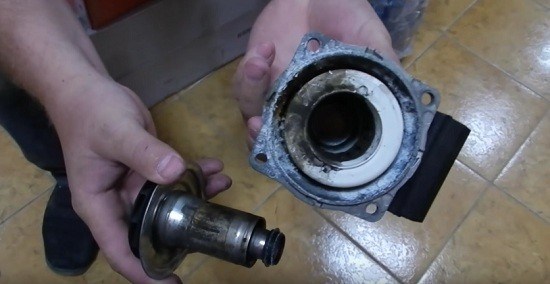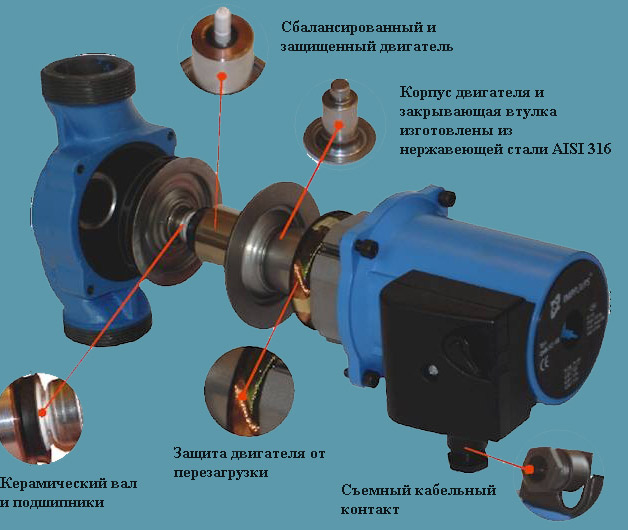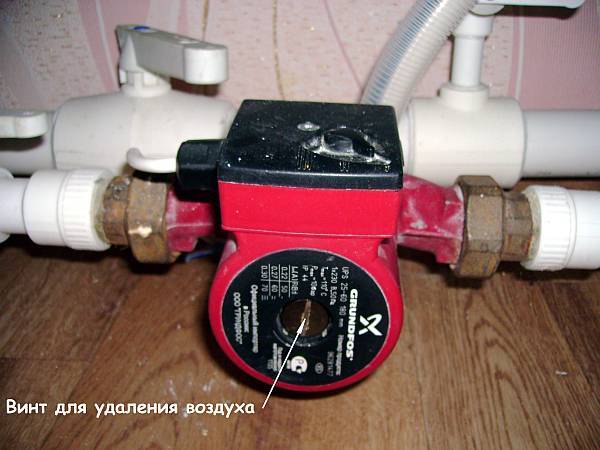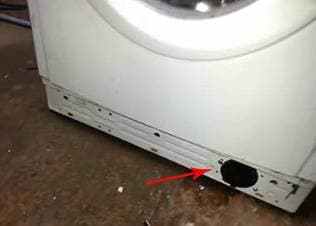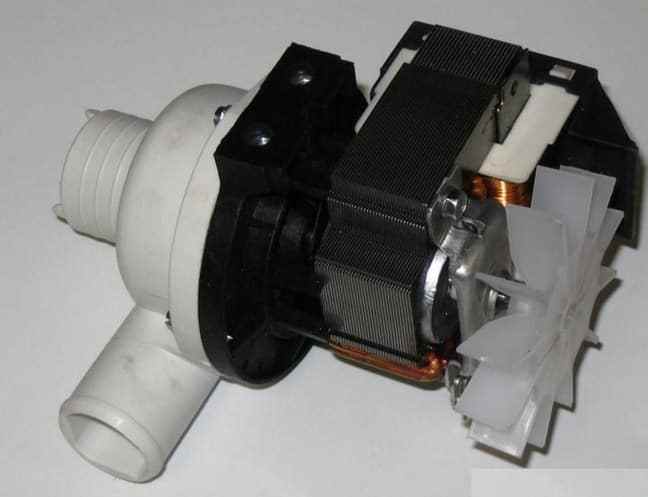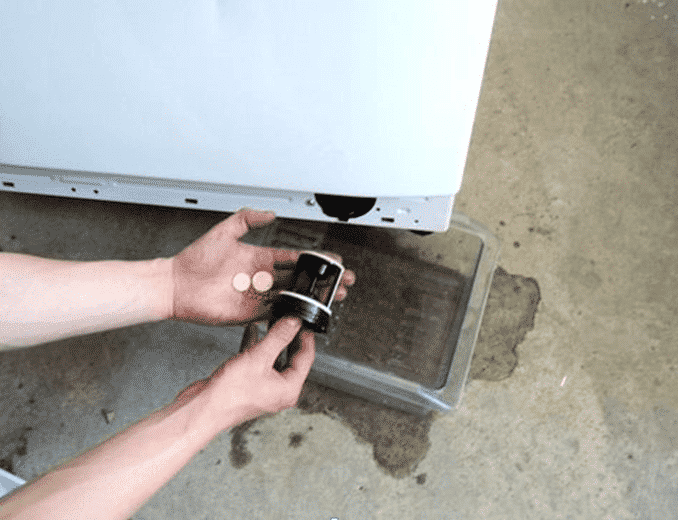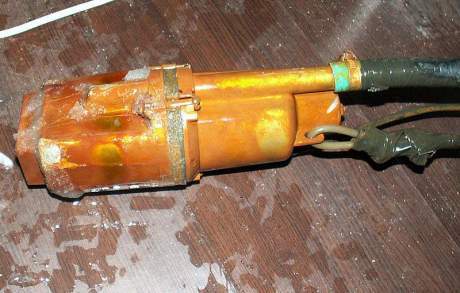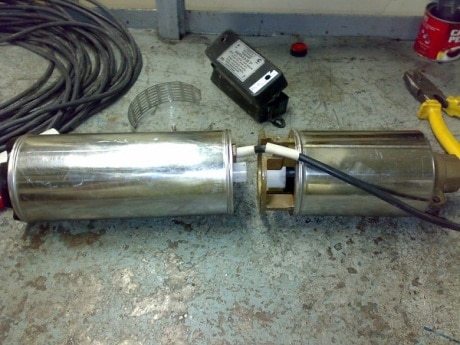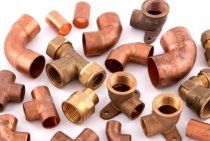Cleaning the drain hose
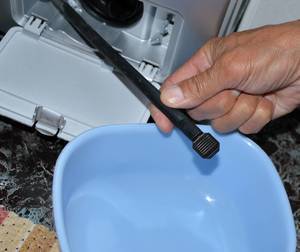
And here again, you will first have to remember the instructions that came with your washing machine, since the designs of all brands and models are different.
The drain pipe can be cleaned without removing it. Stores sell special substances that dissolve debris accumulated in hoses and pipes, the seller will help you find what you need. You can prepare such a solution at home, pour 200 g of baking soda into the drum and turn on the machine (without laundry) for washing at 90 degrees. But if this option did not work, you still have to disassemble the machine.
The main thing for any machine is to disconnect it from the mains before work, turn off the taps, drain the water and disconnect the end of the hose from the sewer.
Now prepare your screwdrivers and choose how to get to the hose in your machine: through the bottom panel, back cover, front or side panel.
How to clean the drain washing machine hose LG, Samsung or Indesit
: remove the bottom panel, disconnect the filter, lay the machine on its side and disconnect the hose from the pump, and then from the body of the machine.
If your option is the back cover, unfasten the drain hose from the body and unscrew the water supply hose from the valve, unscrew the bolts and remove the top and back covers, remove the drain hose.
If you have Bosch or Siemens
, then remove the clamp and rubber band from the front of the housing, the powder tray, remove the bottom panel and unscrew the bolts, remove the door lock and front cover, release the clamps and pull out the hose.
If the machine is a top-loader, remove the side panel, release the clamps and pull out the hose.
Now let's move on to cleaning the hose. To do this, use a special non-metallic cable with a brush at the end. First, clean the hose on one side, then on the other and rinse it under running water. After the procedure is completed, the machine must be assembled in the reverse order. To check, turn on the machine without laundry (you can add citric acid, against scale) for washing at 60 degrees.
Where to find a drain pump
To clean the pump, it still needs to be found inside the housing. To do this, prepare a screwdriver, a wrench, a basin with low walls (to drain water into it) and a rag.
The easiest way to find where the pump is located in the washing machine is in Indesit, Beko, LG, Samsung, Whirlpool, Ardo, Ariston and Candy brands.
In Bosch, AEG and Siemens cars
you need to dismantle the front of the machine. Necessary actions:
- Take out the powder tray, unscrew the screw.
- Open the door on the bottom panel of the machine, unscrew the screw and remove the panel.
- Unscrew the screws, remove the clamp and disconnect the cuff.
- Release the clamps and remove the housing front.
- Unscrew the screw, substitute a basin and drain the water by removing the pipe, disconnect the wires.
If it's Zanussi:
- Loosen the clamps and disconnect the drain hose.
- Unscrew the screws and remove the back wall of the machine.
- Disconnect the wire terminals and unscrew the drain pump.
- Disconnect pipes. Everything is ready for cleaning.
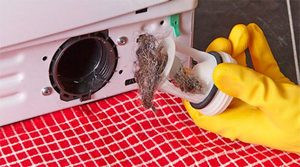
To begin with, the pump needs to be disassembled, to do this, unscrew the screws, you will get two parts - a “snail” and a pump. Initially, it is worth inspecting and, if necessary, cleaning the pump impeller, then check the “snail”. Collect everything and test the machine in the "rinse and drain" mode.
If all else fails - most likely, you will have to change the pump.
So, for example, how to clean the pump in LG washing machine
:
- Unplug the machine, check if there is water in the powder tray.
- At the bottom of the machine, find a special panel and open it with a flat screwdriver.
- Unscrew the self-tapping screw, disconnect the filter from the housing.
- Tilt the machine back and place a basin, open the filter cover and drain the water.
- Unscrew and clean the filter counterclockwise. After that, you can check if it was this pollution that caused the breakdown, turn on the machine in the “drain” mode, you should hear the operation of the pump blades.
- By gently pushing and turning the pump counterclockwise, you can get it from the bottom of the machine (it would be better to put it on its side, if possible).
- Disconnect the wires and pipes, loosen the clamps. Everything is ready to be cleaned.
Prevention and maintenance
Long service life and trouble-free operation is possible only if the proper operating conditions and regular maintenance of the pump are observed. Maintenance refers to periodic inspection and cleaning of the pump. An inspection for deviations in work should be carried out at least once a quarter, that is, twice during the heating season. It is advisable to clean every two to three years, depending on the quality of the water and the conditions in which the pump operates.
During the entire period of operation, it is advisable to periodically check the operation of the pump:
- Connection points are checked for leakage. When detected, gaskets and seals are replaced (tow, FUM tape, etc.).
- Visually check the presence and condition of grounding.
- The sound of a running engine should not be accompanied by clanging or impacts, extraneous sounds.
- The motor should not vibrate much.
- The pressure in the line is checked and its compliance with the nominal one.
- The housing must be clean and dry. If this is not the case, then external cleaning should be carried out, the electronic unit checked for flooding and the cause of the pump being wet should be eliminated.
Approximately once every two to three years, it is advisable to clean the pump, including all its elements. This applies only to models with the possibility of disassembly. There are pumps with a pressed or one-piece, welded casing that do not require repair or disassembly. Such units work to failure and are then replaced with a new assembly. It is advisable to entrust this work to a service center. However, if you have the skills and tools, you can do everything yourself.
Would need:
- hex key;
- slotted screwdriver (flat) 4 and 8 mm;
- cross screwdriver.
Before disassembling the pump, water is drained from the system or a separate section is drained in which the pump is involved, dismantle it and then proceed with disassembly.
Procedure:
- With a hex wrench or a Phillips screwdriver, 4-6 bolts are unscrewed around the perimeter of the motor housing at the junction with the shell of the pump part.
- Remove the shell, while the impeller will remain on the rotor shaft along with the motor.
- Locate four drainage holes around the perimeter. Using a narrow slotted screwdriver, pry a little around the perimeter of the engine compartment jacket under the impeller. As a result, the shaft with the rotor and the impeller will come out of the grooves and the stator cup. You can help yourself if you unscrew the protective plug from the outside of the pump, insert a screwdriver into the slot on the end of the shaft and knock the shaft out of the support bearing with light blows.
This analysis is complete. Now you should clean the surface of the rotor, impellers and the inner surface of the shell from plaque and scale, if any, without damaging the surface of the parts.The use of coarse abrasive is not allowed. It is better to act with a brush with a polymer hard bristle. Cleaning products containing a weak solution of hydrochloric acid can help. In extreme cases, the smallest emery is used - “null”.
For wet rotor pumps
, it is important to check the cleanliness of the channel inside the shaft and the drainage holes located in the protective jacket separating the zone of the pump part and the motor. The fluid enters the rotor just through these holes and then returns through the internal channel, if they are clogged, the engine cooling suffers
For dry rotor pumps
bearing waterproofing is important. If a leak is detected from the pump unit to the stator unit, then all gaskets and seals inside the apparatus should be completely replaced.
The condition of the bearings on which the shaft rests is checked. If they are already broken in order, they will need to be replaced, which is extremely difficult to do at home, you will have to contact a service center.
All seals and gaskets inside the pump should be checked for wear and replaced if necessary. Once all elements are cleaned and checked, reassembly is performed in reverse order.
Sanitizing your pump at home
- Washing and sanitizing the pump at home is recommended when changing an empty bottle to a full one every 6 months (in dusty rooms and used by a large number of people, more often, once every 3 months)
- Wash your hands thoroughly before cleaning and sanitizing your pump.
- Remove the pump from the bottle, remove the filling valve, water pipes from it and separate them. Unscrew the pressure cup of the pump
- Rinse all external and internal surfaces of the water pipes and the filling tap with any dishwashing detergent using a brush under running water. Clean the pump faucet and tubes with a special cable, or with a napkin worn on a regular pencil. Flush the pump pump. The water temperature must be at least 30 degrees.
- Rinse all parts of the pump thoroughly with water. The water temperature must be at least 40 degrees.
- Prepare a disinfectant: at home, mix 2 liters of water with 250 g of citric acid (or 1.5 liters of water and 3% hydrogen peroxide solution (you can buy a ready-made solution at a pharmacy). You can take a solution of 3% table vinegar).
- A disinfectant bought in a store must be approved for this type of treatment, have instructions for its use and a document confirming its safety.
- Pour the peroxide or citric acid (or other commercially available solution) into an enamel or glass large bowl. Add citric acid if needed if the bowl is larger.
- Place all parts of the pump in a container so that all water holes are immersed in the disinfectant solution: filling tap, pump water pipes, pump. The disinfection time is determined in accordance with the instructions for use of the disinfectant. Hold at home for 30 minutes.
- If there are parts left that were not immersed in the solution, such as the outer surfaces of the pressure cup, wipe them with a clean cloth soaked in the disinfectant solution.
- Rinse the filling tap, pump, pressure cup and water pipes under running water (rinsing time is determined in accordance with the instructions for use of the disinfectant).
- Immerse the tubes, faucet in a container of hot boiled water. Rinse the pump with warm boiled water, as the plastic in it is quite thin.
- Rinse with bottled water that you drink - the straws, the pump spout inside and out, the water hole inside the pump, the pump.
- Dry the pump (Because it is a dry environment, evaporation of water is harmful to bacteria. And wipe dry the parts that can be wiped.)
- We assemble the pump pump, put on the pressure cup, insert the tap and pump tubes.We check.
- For pumps used in dusty environments, it is recommended to replace the air filter when dirty (can be ordered from us).
Modern circulation pumps practically do not need maintenance, and if repair of the circulation pump for heating is necessary, then it is better to entrust this matter to a specialist from the service center. However, in order to prevent equipment breakdown, you can take some measures that will help prevent such an unpleasant event.
Maintenance of circulation pumps
Pump malfunctions and solutions
The device of the circulation pump with a "wet" type rotor is based on a modular principle. Modules can be completed in different configurations. It all depends on the power and size of the pump.
Any repair work can only be carried out if the power is completely cut off and the area has been drained.
Malfunctions of the heating circulation pump:
-
The pump turns on, sounds are heard, but the shaft does not rotate.
Why does the heating pump make noise and why did other “symptoms” appear? The reason may be the oxidation of the shaft after a long period of inactivity of the device. If the pump is blocked, the device must not be left switched on. It is necessary to drain the water and all the screws that tighten the pump housing with the electric motor must be unscrewed. Next, we remove the engine itself, and its impeller is rotated manually. If the pump is of low power, then the shaft can be unlocked by turning it with a screwdriver. For this, there is a special notch at the end of the shaft. -
A foreign object has blocked the wheel.
How to disassemble the heating circulation pump? We dismantle the pump motor using the above method. To prevent repeated blocking, a mesh-type filter must be mounted in front of the pump.

-
There are problems with the power supply.
It is necessary to check the voltage in accordance with that indicated in the technical data sheet of the device. You should also check if there are all phases and if everything is connected correctly in the terminal box. -
The circulation pump does not make sounds (the heating circulation pump does not buzz) and does not turn on.
There is also no supply voltage. The fuse may be damaged. In this case, the fuse will need to be replaced. If nothing has changed after the replacement, then the reason is probably in the motor winding. She probably burned out. -
The pump turns on, but after a while it turns off.
The cause may be deposits that have formed between the rotor and the stator jacket. It will be necessary to dismantle the electric motor and descale the stator jacket. -
When the pump is turned on, a sharp noise occurs.
Why is the heating pump buzzing and how to vent the heating circulation pump? It is necessary to release the air and install an automatic air vent at the top of the piping pump assembly.
-
The pump vibrates.
The cause may be bearing wear. Typically, this problem is accompanied by a characteristic noise. To fix the problem, you will need to replace the bearing. -
The water pressure and its supply are lower than those indicated in the circulation pump passport.
Such a malfunction is typical for three-phase pumps, if they were connected incorrectly. -
After the pump has been started, the external protection of the electric motor is activated.
Most likely, problems take place in the electrical part of the engine. -
It is necessary to check if there are phases in the terminal box.
You also need to check if the fuse contacts are not dirty. You can also check what is the resistance of the phase to ground.
If you know how to clean the drain pump in the washing machine, a useful functional device will serve you faithfully for many years.Having once heard an unusual buzzing during the washing process or, having discovered that water does not drain through the hose, you must first think about the possibility of cleaning the pump. In any case, it will have to be removed for evaluation, sometimes the element simply fails. Even a person who is far from understanding the operation of a washing machine is able to carry out manipulations that housewives usually try to entrust to professionals.
Where is the drain filter located in the washing machine
First, let's figure out where to look for the node we need. Every car is different in terms of make and model. They also differ in the type of loading of linen. But with all the variety of types of equipment, its manufacturers install filters at the bottom of the washing machine next to the pump.
Since this is an internal part of the machine, it is closed from the outside with a hatch or a removable panel.
To make it easier for you to deal with your washer, we have put together a photo table with the location of the filter for the main CMA brands.
| For LG washing machines, the pump filter is located at the bottom left behind the hatch. |
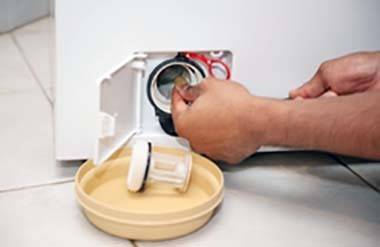 |
| For machines of the brands Indesit and Ariston, look for the filter behind the lower removable panel on the right. |
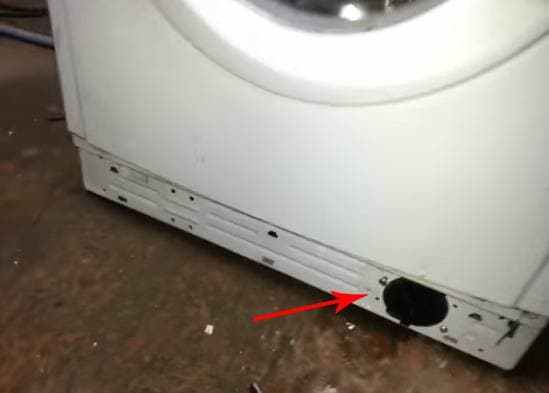 |
| For Candy washing machines, the drain filter is located on the left side behind the hatch. |
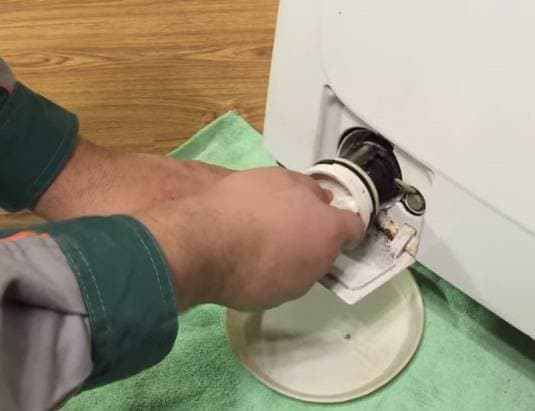 |
| For Bosch and Siemens machines, the assembly is located on the right behind the hatch or decorative strip. |
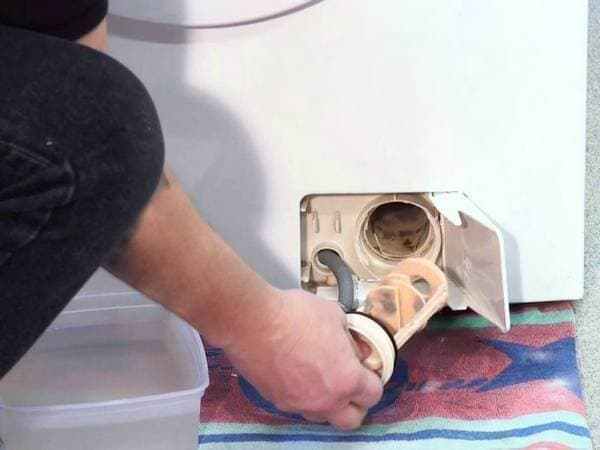 |
| In the Electrolux or Zanussi brands, the filter is located at the bottom right and is covered with a plastic hatch. | 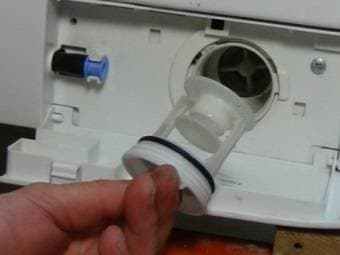 |
| V Samsung washing machines look for the filter in the lower right corner behind the plastic panel or behind the hatch. | 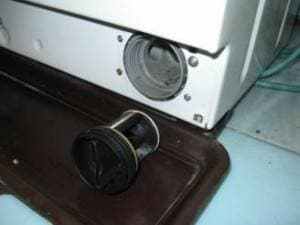 |
| On top-loading washers, for example, on the Whirlpool, the part is located at the bottom left. |
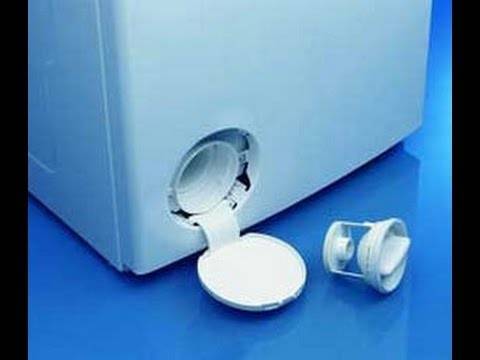 |
| In the Atlant washing machine, the filter is hidden behind the hatch at the bottom right. |
 |
| In Electrolux and Zanussi top-loading washing machines, the drain filter is built into the rib of the machine's drum and is removed from the inside of the drum. |
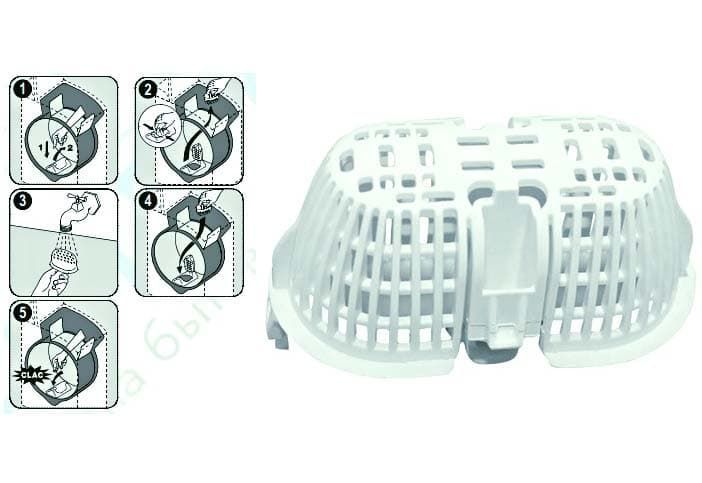 |
Causes of clogging and their prevention
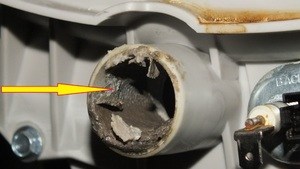
What is the reason for the blockage? Dirt and debris from the plumbing or clothing, as well as low-quality powders that clog the pump instead of dissolving in water. Therefore, two types of blockages are distinguished: mechanical (from debris) and natural (from the smallest particles of clothing accumulated on the filter). A natural blockage in the drain system forms in any case, albeit slowly, so if you never clean the drain system of your machine, it will definitely rise at the most inopportune moment.
In order to reduce the number of “cleanings” of the drain system in the future, it is enough not to forget the simple rules:
- Clothes with detachable "decorations" are best washed in special bags.
- Do not use poor quality washing powder.
- Once a month it is worth cleaning the drain system of the machine.
- Before each wash, check everything, even the smallest pockets of clothing for forgotten items, debris or pieces of paper.
- Fasten zippers and buttons before washing.
And remember, the washing machine also needs care, and then it will serve you well for a very long time.
Attention, only TODAY!
It is recommended to clean the filter and completely drain the water at least 2-3 times a year.
If this procedure is carried out regularly, then damage to the drain pump can be avoided for a long time. Sometimes there are cases when filter cleaning becomes necessary, for example:
If the washing machine does not drain water or the spin cycle fails;
If the display shows the message “Clean pump”;
For this:
1. Disconnect the washing machine from the mains.
2. Open the bottom panel or cover on the panel that covers the filter.
Or so
3.Prepare a container and place it under the filter on the right side.
4. Open the filter a little. Do not remove completely. Gently turn the filter counterclockwise until water begins to pour out of it.
5. Wait until all the water has completely drained out, unscrew the filter completely and remove it.
or so
6
You can carefully tilt the machine forward to let the remaining water run out completely.. 7
Clean the compartment where the filter was located and the filter itself.
7. Clean the compartment where the filter was located and the filter itself.
8.Check that the drain pump impeller rotates freely.
9.Reinstall the filter and turn it clockwise until it stops.
10. Replace the bottom panel (or the cover on the panel).
11. Plug in the washing machine.
If you have a model with an emergency drain hose, then remove the plinth (or panel) as described above. Then remove the emergency drain hose, place the water tank at such a distance that the hose reaches it. Remove the plug from the hose and let the water drain into
capacity. The filter should be cleaned as described above. Then install the plug on the hose and place it in place at the base of the machine.
Despite the fact that the washing machine is an "assistant" in maintaining cleanliness, it also needs care and cleaning. If one day when washing, you hear an incomprehensible buzz coming from the machine, which you have not heard before, while the machine does not drain the waste water, this means that it urgently needs to be cleaned. Most likely, the drain pump is clogged, in the worst case, the pump is out of order. Therefore, we decided to tell you how to clean the drain pump in the washing machine on your own, without resorting to the help of a master.
How to get a pump
This is done quite simply. In most devices for the pump, there is a special department at the bottom of the machine. The pump is hidden behind a small rectangular panel, which can be removed by unscrewing the fasteners and prying it with a screwdriver. Next, you need to find a self-tapping screw that holds the part inside the case. It is usually located on the right side of the pump.
The next step is to prepare a container into which you can drain the water. This container will need to be substituted under the washer, after tilting the device. Only after that it is recommended to remove the pump, because water can flow out of it.
To extract, you need to drown the part into the body of the machine and get the pump through the bottom. First you need to disconnect all wires and hoses
Please note that not all models have the ability to capture a detail like this. For more information, see the manual for your device.
Pump cleaning
When the pump is in your hands, you can start cleaning. First you need to disconnect the impeller, which is mounted on several screws. It is in this part that a lot of dirt can accumulate, so cleaning starts from here. Then you can clean the snail, getting rid of all the blockages accumulated in it. Subsequently, it is necessary to collect everything and install it in its original place.
The assembly takes place in the reverse order, after which it will be necessary to check the performance of the machine. If everything is connected correctly, then the cleaning can be considered complete.
In order for the washing machine to work well, it needs periodic cleaning. When the user constantly operates the washer without taking care of the care, sooner or later it will fail. If during the wash cycle a buzzing sound is heard from the machine, and the water does not drain for a long time, then the drain pump is clogged or faulty.
In the article we will look at where the pump is located in various models, how to check and clean it.
You can determine that the pump is clogged by external signs
Pay attention to these symptoms:
- Water is bad and slowly drains from the tank.
- During the pumping of water, noise and buzzing are heard.The pump tries to drain the water, but to no avail.
Why is the pump clogged, what contributes to this:
- Dirt and debris coming from the water pipe.
- Garbage that gets into the water from clothes. These are buttons, coins, threads, hair.
- Bad detergents that do not dissolve during washing and clog the pump.
If the drain path in the SMA has never been cleaned, then it is not surprising that the pump is clogged. Consider how to fix the situation yourself and clean the car.
Repair
A broken circulation pump is best taken to a specialized service center, especially if it is still under warranty. Most of the models currently on the market, unfortunately, are non-separable or partially demountable, so that if problems arise with its internal parts, entire blocks or the pump assembly must be replaced. If the warranty period has already expired, and the design of the pump allows you to disassemble it and get to all the main components, then if you have the appropriate skills, you can repair it yourself.
Having determined the cause of the malfunction from the table above, it is enough to disassemble the pump, as indicated in the paragraph on prevention and maintenance, and replace the defective part.
In the pump control unit, the main elements are:
- capacitor for 1-5 microfarads;
- terminal block for connection;
- speed controller.
In view of the small capacitance of the capacitor, you can check it with a multimeter, which has a built-in C-meter with a limit of up to 20 microfarads
If the readings deviate strongly from the nominal value, the capacitor should be replaced, while it is important to observe the polarity of the inclusion and its voltage tolerance is mandatory. For a conventional single-phase motor, capacitors with a tolerance of up to 450 V are used.
The speed controller is replaced as an assembly with a new one. It is enough to disconnect it from the terminals, remembering the position of each pin and connect a new one.
The terminal block must be perfectly clean, dry and free of obvious overheating or scorching. If the above problems are present, then it should be replaced with a new one, the same or similar in number of connections.
Models of circulation pumps from manufacturers Wilo, Ggrundfos, Dab are popular. Not least due to their reliability. It is possible to expect that these pumps will break down during the warranty period only if the recommended operating conditions are violated. However, during the post-warranty period, Wilo often has a problem with thrust bearings. It only helps to replace them.
Ggrundfos and Dab can "please" the overgrowth of the impeller with scale for high-temperature heating systems, as well as the silting of the stator cup. It is better to prevent these problems by installing a good filter and water treatment. Otherwise, breakdowns are more often argued by external problems.
Prevention measures
Causes of clogging washing machines, be it Whirlpool
, LG
, Bosch
or any other brand - garbage, hard or dirty water, low-quality detergents. To reduce the risk of pump clogging, we recommend:
- Use only special washing powders for washing
- for washing in SMA. - Wash clothes in wash bags
to prevent small parts from getting into the drum and tank: buttons, locks, etc. - At the entrance to the machine, you need to install a cleaning filter - so that perfectly clean water enters the machine, without impurities and rust.
- The user, noticing a decrease in the performance of the device, must disassemble the device in a timely manner
to clean the filter devices and the pump. - Carefully check the pockets of clothing before loading into the drum.
- Too dirty laundry should be soaked before washing - to remove large fractions of dirt.
- Use an anti-scale agent when washing
. - When the wash is finished, check the drain of the water from the tank - it should pour out completely.
If you try, the task of cleaning the water pump can be done by yourself, without the help of a specialist.
It is important to follow the instructions and follow the procedure. Timely cleaning of blockages will prevent damage to the pump and extend the life of your machine.
Increased requirements are imposed on the technical and operational characteristics of pumps. They must work smoothly in the most adverse conditions. Therefore, manufacturers strive to minimize the number of moving, rubbing parts. Devices adequately withstand loads, work for years, and sometimes decades without repair and replacement, but they all need to be cleaned. All parts of the devices are tightly fitted to each other, “stick” during operation, so it may be difficult to disassemble. How to disassemble and clean the pump?
Surface pumps are easier to disassemble than submersible ones, because their cases are not so airtight
Why did the blockage happen
During the work of the SMA, alarming signs may appear:
- Drainage is unusually slow.
- When pumping out, a buzzing sound is heard. The efforts of a wear device do not lead to a result.
The diagnosis is unequivocal - the pump is clogged. Causes of clogging:
- Garbage and pollution coming along with water from water pipes.
- Garbage and small items that fall into the drum along with clothes put in the wash.
- Poor-quality detergents - they, not completely dissolved, clog the drain.
It happens that the owners of automatic washing machines, using them, never clean the drain. But no matter how “smart” and efficient the car is, no matter how well-known brand it represents - “Samsun
g", "Ariston", "Electrolux
" or "Indesit", they all need regular cleaning of all nodes in contact with water. Cleaning the drain assembly is difficult because it still needs to be reached.
How to disassemble and clean a submersible pump
Approximately once every two years, the pump must be removed from the working fluid, disassembled and cleaned. If worn parts are found during inspection, they are replaced without waiting for interruptions in work.
Work order
The pump is cleaned in the following order:
- Extraction from the well or reservoir where the device is installed. You can only lift the device by the cable, in no case by the pipe.
- Visual inspection. The pump is inspected to make sure that there are no signs of rust on the casing, cracks and chips that may appear during operation or the lift itself. If everything is in order, the shaft is smoothly scrolled by hand. It should move without jamming. If rotation is difficult, you need to disassemble and check the assembly with ball bearings.
- Checking the oil level and seal condition. If necessary, add new oil. The oil seal must pass oil well in order to prevent the “dry” operation of the device. This is fraught with breakdowns. If the seal is worn out, replace it.
- Cleaning the impeller (for centrifugal equipment). This knot is often clogged with silt. To clean it, remove the lid and rinse the work area with water. At the same time, the condition of the check valve is monitored. If it has lost its tightness, it will have to be replaced.
Before cleaning, the device should be removed from the well and poured out with water.
Flushing the working area
To disassemble the device, remove the coarse filter mesh. It can be fastened with either two screws or a spring clip. When the grid is removed, the bolts of the flange connection are unscrewed and the pump is divided into two parts - upper and lower. The washing process itself is simple: pour water from a hose into the inlet and rotate the working shaft. You can use a 12 key to turn the shaft. Gas and open-end will do.
After flushing, check the shaft stroke again. If it is light and smooth, the device can be assembled and installed in place. If there are difficulties, it is necessary to wash the working area again.The real trouble is when the water from the pump is already clean, and the shaft is stuck and does not spin. Most likely the impeller is broken. In this case, you do not need to try to repair the device. It should be taken to the workshop. Do-it-yourself will only hurt.
Preventive cleaning of pumping equipment should be carried out regularly. If for a borehole pump it is enough to prevent it once every two years, then for drainage and fecal pumps it is needed more often, because. devices work with contaminated liquids, drains. If damage is found, it is better to take it to the masters. It's more reliable.
Modern circulation pumps practically do not need maintenance, and if repair of the circulation pump for heating is necessary, then it is better to entrust this matter to a specialist from the service center. However, in order to prevent equipment breakdown, you can take some measures that will help prevent such an unpleasant event.
How to clean the pump in the washing machine
The main task when cleaning the pump is to get the impeller working.
You can get to it by removing a few screws and part of the pump housing. In good condition, the impeller rotates. Accordingly, it wraps various elements of things around its body. It must be cleaned of accumulated debris (hairs, threads, wool). All actions must be carried out carefully.
Now you can assemble the pump and install it where you got it from. All manipulations are performed in reverse order.
The washing machine needs to be checked, run the wash in standard mode. The absence of uncharacteristic sounds and the draining of water without interference indicates that everything is done, right, and the part is working properly.
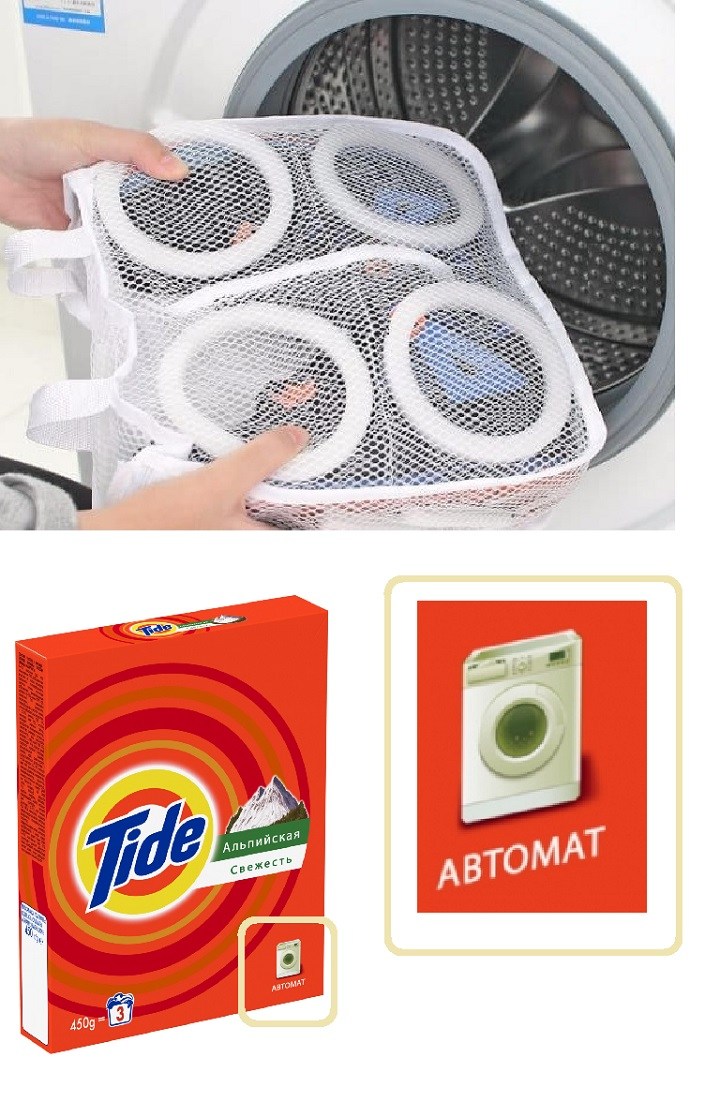
Conclusion. Conclusions from the article
If the washing machine has ceased to perform its functions 100% or has completely stopped working, you should immediately take action. The first thing you can do at home without the help of a professional is to clean the drain pump with your own hands. To do this, you need to arm yourself with the necessary tools and follow the instructions and recommendations.
A washing machine is a piece of household appliances that helps users cope with laundry tasks. It saves a lot of time, so when something goes wrong, it frustrates the user. There are many problems that may occur during the operation of the machine and cause it to stop working. We decided to focus on such a problem as a clogged drain pump. Usually, the symptoms are buzzing and not draining. What can be done?
If the pump is completely out of order, you must purchase a new one. This is easy to do, given the large number of offers on the market for spare parts for household appliances. For example, a pump for a washing machine can be purchased on the EasyFix website. The main thing is to choose a part that will exactly match the model of your device.
However, not always help is to replace the component. Sometimes you can just clean it and continue using it. To do this, you have to get the part.
